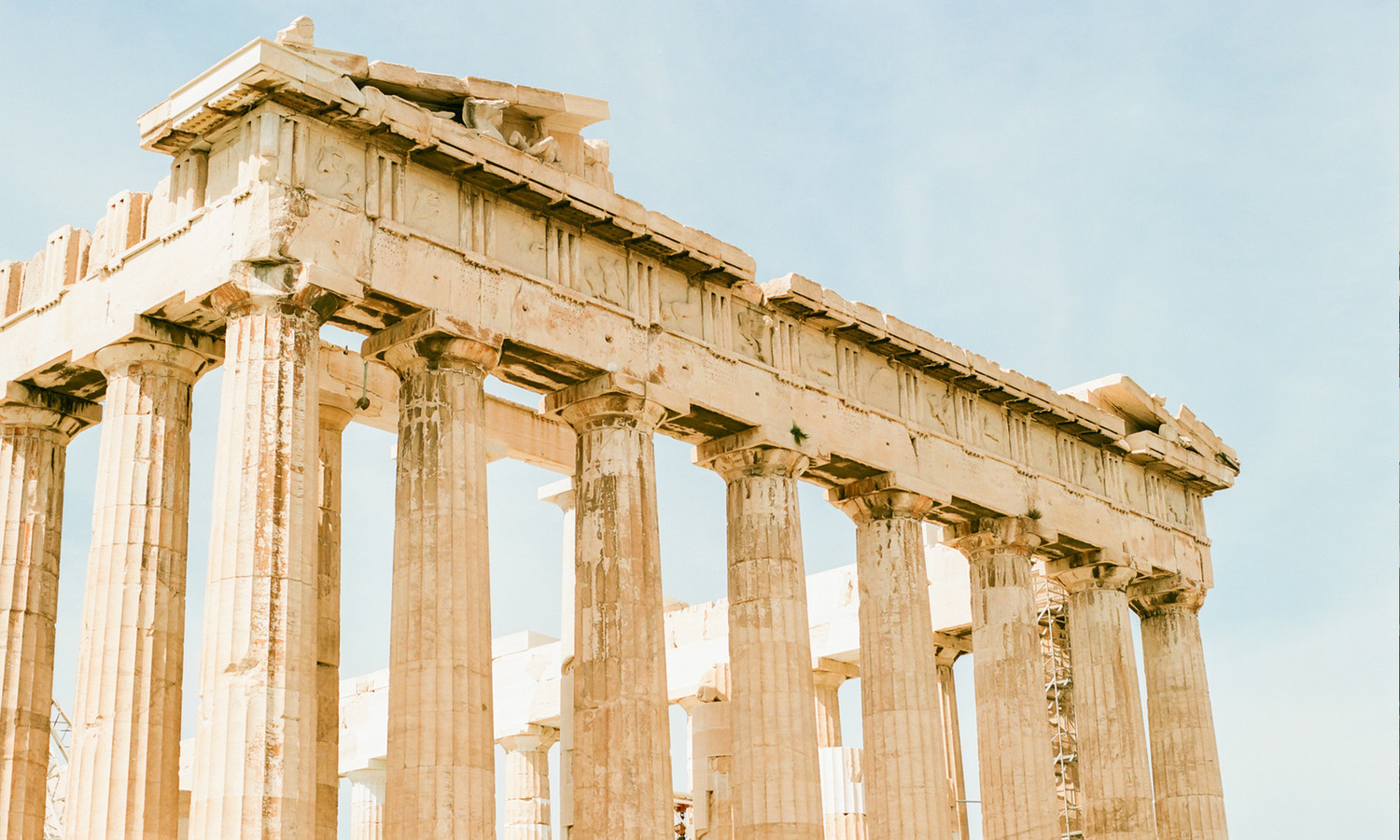Santorini is a volcanic island in the Cyclades group of the Greek islands. It is located between Ios and Anafi islands. It is famous for dramatic views, stunning sunsets from Oia town, the strange white aubergine (eggplant), the town of Thira and naturally its very own active volcano. There are naturally fantastic beaches such as the beach of Perissa, maybe the best beach in Santorini, the black pebble beach of Kamari, white beach and red beach.
An alternative name for Santorini is Thira. Santorini is also a name for the family of islands surrounding Thira, once forming a single island prior to a major volcanic event in approximately 1628 B.C.E.
The small island cradles a rich variety of landscapes and villages. Visit traditional architecture in the small village of Mesa Gonia containing a mixture of ruins from the 1956 earthquake and restored villas as well as a winery at the foot of the settlement. Pyrgos is another notable village set inland with its grand old houses, remains of a Venetian castle and several Byzantine churches.
The island has one natural source of fresh water, a small spring situated in a cave behind a small chapel located halfway up the steep footpath between Kamari and the entrance to Ancient Thira. It only provides a small quantity; it is of good quality as it comes from the only remaining limestone outcrop of the pre-volcanic island. Prior to the early 1990's, it was necessary for water to be delivered to the island via tanker from Crete. However, most hotels and homes now have access to water provided by a local desalination plant. While this water is potable, it is still rather salty, so most everyone drinks bottled water while visiting Santorini.
Picateresque Architecture
Fira is the fiery capital, a marriage of Venetian and Cycladic architecture, whose white cobblestone streets bustle with shops, tavernas, hotels and cafes, while clinging to the rim of the caldera nine hundred feet above the its port. If arriving by sea you can take a cable car up from the port or alternatively take a trip on one of the hundreds of mules up the 588 zigzagging steps. You could also attempt to walk up the steps but be warned, they are winding, narrow in parts with only low walls, they are covered in donkey excrement and the donkeys themselves will make no attempt to avoid you.
Walking north from Fira for about twenty minutes will bring you to Imerovigli, where you can take in the magnificent views of the island’s unique scenery from the tiny town.
At the northern end of the caldera is the quintessentially Santorininian town of Oia, also spelled Ia and pronounced EE-ah, with its whitewashed walls sunk into the volcanic rock and its blue domes rising above the sterling beauty of the stunning, russet Ammoudi Bay. At dusk, the town attracts crowds of people venturing to see the sunset. Santorini's sunsets, as viewed from Oia, are reputed to be among the world's most beautiful.
Due to the spectacular and unique natural beauty of Santorini, many Greek singers have chosen the island as the setting of their videos. Greek and Brazilian TV series have been shot of Santorini, as well as some Hollywood movies (e.g. Tomb Raider II). Generally Santorini is a pole of attraction for Greek and international celebrities.
The Cycladic Islands are world-famous for their picturesque towns of cubic white-washed homes and blue-domed churches. Santoríni is especially famous for the towns of Firá and Oía, whose white and pastel-colored homes and churches-- seemingly stacked on top of each other-- are perched on the cliffs of the caldera. Many of these traditional homes are built on cliff-side caves, thus having a much larger interior than their exterior would suggest. The architecture of Santoríni's picturesque towns is typically Cycladic, but with strong neoclassical and baroque influences visible in many of the island's churches and public buildings.
Santorini is one of the great natural wonders of the world, and its main attraction is the landscape and seascape of the island itself. The configuration of the present, roughly semicircular island is the result of an enormous volcanic explosion which occurred probably around 1630 bce, literally blowing the top off the island and changing what had been a typical half-submerged mountain of an Aegean island into a flooded crescent caldera, in the middle of which a few small smoking islands still bear witness to volcanic activity. Some have speculated that this event was the inspiration for the myth of Atlantis. The towns of Fira, Ia (also known as Oia) and Thirasis cling to the steep cliffs facing into the caldera bay. Tours to the central "smoking" islands are readily available and one can see and feel steam vents and recent (1950s) lava flows.
Scenic Paradise
Another popular reason for coming to Santorini are the legendary sunsets, some of the most spectacular in the world. Ia is one of the few places on the island which is both close to a sea and offers a good view to a sunset over the sea: in other towns, the sun disappears behind the volcano. Additionally the town of Fira is stunning.
Be sure to explore the areas outside of the towns. There is beautiful countryside where tradition still survives. Cave houses (both abandoned and occupied), gardens, vineyards, small family business, and tiny churches are there to be discovered.
Santorini ranks among top destinations for wedding celebrations for at least 4 years -- primarily for sunset and peace, like those in Oia. Couples often arrive with few friends, stay in Ia (places like Fanari Villas). Groups often arrive in the beginning of the week -- judging by demand for cabrios and number of corteges seen on Mondays compared to weekends.
Writing by WikiTravel | Photos by Amy Cherry
